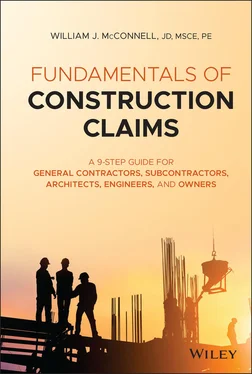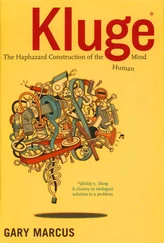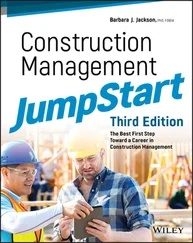After 30 days, the owner and the engineer shall submit any unsettled disputes to mediation. The mediation process must be completed within 120 days.
If the dispute remains unresolved after mediation, either party may invoke binding dispute resolution. If Exhibit H is included within the E-500 agreement, arbitration is stipulated and must be filed before the dispute would be barred by the applicable statute of limitations. If the E-500 agreement does not incorporate Exhibit H, venue shall be state court having jurisdiction at the location of the project (or federal court in the district in which the project is located, if appropriate).
IV. Standard Purchase Order Forms for Purchaser–Vendor Agreements
The following is a list of dispute resolution provisions for standard purchase order forms for Purchaser–Vendor Agreements published by the AIA and ConsensusDocs—the EJCDC does not have a standard purchase order template. Note that each form allows the parties to edit the purchase order before execution, so it is important to review the exact dispute resolution provisions within the subject purchase order.
A. AIA A152 and A152 Exhibit A, Article 8, Claims and Disputes
The AIA Document A152 – 2019, “Purchase Order,” is AIA's most commonly used purchase order form between a purchaser and a vendor. This one-page form lists AIA Document A152-2019, Exhibit A – Terms and Conditions, as a contract document. Section 1.2 of Exhibit A, “Governing Law, including the Uniform Commercial Code,” notes the choice of law as the project jurisdiction's Uniform Commercial Code (UCC) as adopted, and it indicates that disputes are to be resolved in a court of competent jurisdiction unless the parties agree otherwise—no further procedure is provided beyond this statement. Keep in mind that nearly all US jurisdictions have adopted the UCC in some form.
B. ConsensusDocs 702 and 703, Purchase Orders
ConsensusDocs has two purchase order forms, one for commodity goods (ConsensusDocs 702, which includes a 702.1 attachment) and the other for non-commodity goods (ConsensusDocs 703). Both forms list the parties as the “Buyer” and “Seller” and unlike the AIA form, the ConsensusDocs' forms provide detailed dispute resolution procedures. The 702 lists the following dispute resolution procedures:
In the event that a dispute arises, direct discussions should be conducted between the parties' representatives that possess the necessary authority to resolve the matter.
If the parties' representatives are not able to resolve the matter within 5 business days of the first discussion, the parties' representatives shall submit the matter to binding dispute resolution, which can be litigation or arbitration depending on what the parties selected on the purchase order form.
The 703 form adds a mediation requirement before binding dispute resolution:
In the event that a dispute arises, direct discussions should be conducted between the parties' representatives that possess the necessary authority to resolve the matter within 5 business days of the first discussion.
If the parties fail to resolve the matter through direct discussions, the dispute shall be submitted to mediation pursuant to AAA rules. The parties shall select a mediator within 15 business days of the request for mediation.
If the matter is unresolved after mediation, the parties' representatives shall submit the matter to binding dispute resolution, which can be litigation or arbitration depending on what the parties selected on the purchase order form.
The first step in perfecting an affirmative claim is to review the dispute resolution requirements of the subject contract. While standard contract forms are editable, the procedures for dispute resolution are generally the same from contract to contract. To the contrary, the dispute resolution procedures for proprietary contract forms vary. Moreover, dispute resolution terms vary based on the type of contract form. To wit, owner–contractor forms terms vary from contractor–subcontractor form terms, and these forms vary from owner–designer contract forms and purchaser–vendor forms. Thus, it is critical for claimants to understand the steps that are necessary to notice claims, get a project-level decision, run through non-binding dispute resolution requirements, and then trigger a binding dispute resolution process. As time goes on, the cost to administer claims goes up, so presenting proper and clearly supported claims early in the process generally saves both parties time and money.
1 1 https://www.aiacontracts.org/
2 2 https://www.ejcdc.org/online-store/
3 3 https://www.consensusdocs.org/
4 4Agency Boards include: (1) the Armed Services Board for contracts with military agencies; (2) the Post Service Board for contracts with the US Postal Service or Postal Regulatory Commission; and (3) the Civilian Board for all other federal agencies unless otherwise specified.
3 Step 2: Define the Type of Dispute
Contract claims generally fall into five different categories. Standard contract forms have varying notice requirements and allowable remedies for each of these categories. Thus, it is important for the claimant to understand which category the claim falls into so the claim can be administered accordingly. The five claim categories are:
1 Design Issues: When a party is impacted by a design issue on the project and the other party to the contract is responsible for the subject design.
2 Administration Issues: When a party is impacted by the maladministration of the other party to the contract.
3 Performance Issues: When a party is impacted by the poor performance of the other party of the contract.
4 Third-Party Issues: When a party is impacted by a third party and can only recover if the other party to the contract is able to pass the claim through to the third party and recover from the third party. Or, if one or both parties to the contract are impacted by a force majeure event.
5 Change Order Negotiation Issues: When both parties to a contract agree that a change should be made to the contract sum and/or contract time but the parties fail to agree to the amount of the change.
Many parties can be impacted by design issues. For instance, a contractor may be impacted by a design error and if the owner pays the contractor additional funds and grants additional time, the owner is then impacted and might seek recovery from the designer, and then the designer might then seek recovery from a responsible subconsultant. Or, an owner might delegate certain portions of the design to the contractor and if the design generated by the contractor is deficient, the owner might be the impacted party and seek recovery from the contractor via a backcharge. The contractor might then seek recovery from its retained design firm.
Another scenario might be that an owner is impacted by its design builder's deficient design program and this might lead to an owner backcharge to the design builder. The design builder might then assert a claim against the designer. Thus, the scenarios are numerous, but the key point here is that a design issue exists when one party relies upon the design of the other party and when the design is deficient or revised without consideration, the impacted party seeks recovery from the other party. The most common design issues are as follows:
Differing Site Conditions: When one party relies upon the site conditions represented by the other party and the represented conditions turn out to be different, which impacts costs and/or schedule. Or, when the contract documents are silent regarding the site conditions and the site conditions differ from what is generally found at the project location and this impacts a performing party's costs and/or schedule.
Читать дальше












